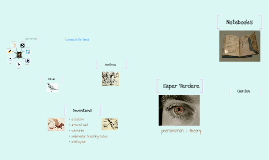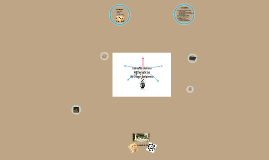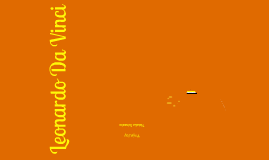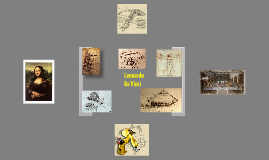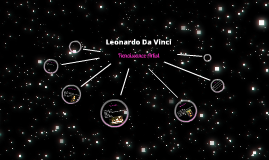Leonardo da Vinci
Transcript: Though the first actual helicopter wasn’t built until the 1940s, it is believed that Leonardo da Vinci’s sketches from the late fifteenth century were the predecessor to the modern day flying machine. As with many of da Vinci’s ideas, he never actually built and tested it – but his notes and drawings mapped out exactly how the device would operate. Da Vinci scrawled next to his sketches of the screw-like machine the following description: "If this instrument made with a screw be well made – that is to say, made of linen of which the pores are stopped up with starch and be turned swiftly, the said screw will make its spiral in the air and it will rise high." One thing Leonardo da Vinci may have understood better than any of his contemporaries was the psychological effects of weapons in warfare. Da Vinci knew that the fear weapons could instill in enemies was just as important (if not more so) than the damage they could actually inflict. This was one of the main ideas behind many of da Vinci’s war inventions – among them, his giant crossbow. Designed for pure intimidation, da Vinci’s crossbow was to measure 42 braccia (or 27 yards) across. The device would have six wheels (three on each side) for mobility, and the bow itself would be made of thin wood for flexibility. Rather than fire giant arrows, Leonardo’s crossbow instead seems to be designed to fire large stones or possibly flaming bombs. For use, a soldier spins a crank to pull back the bow and loads the artillery. The soldier would then use a mallet to knock out a holding pin and fire the weapon. The giant crossbow invention is a great example of the way da Vinci’s artwork really brought his ideas to life. Through his illustrations, an idea, however improbable, becomes realistic and plausible. His vivid drawings of the giant crossbow invention also make it clear the idea behind the impressive weapon was to terrify enemies into fleeing rather than fighting. The way Leonardo da Vinci saw it, the problem with the canons of the time was that they took far too long to load. His solution to that problem was to build multi-barreled guns that could be loaded and fired simultaneously. This idea forms the basis of war inventions like da Vinci’s 33-barreled organ, which featured 33 small-caliber guns connected together. The canons were divided into three rows of 11 guns each, all connected to a single revolving platform. Attached to the sides of the platform were large wheels. All the guns on the organ would be loaded and then, during battle, the first row of 11 would be fired. The platform would then be rotated to properly aim the next row of canons. The idea was that while one set of canons was being fired, another set would be cooling and the third set could be loaded. This system allowed soldiers to repeatedly fire without interruption. The weapon is referred to as an "organ" because the rows of canon barrels resemble the pipes of an organ. Leonardo da Vinci’s design for the 33-barrelled organ is generally regarded as the basis for the modern day machine gun – a weapon that didn’t really develop for commercial use until the 19th century. The precursor to the modern tank, Leonardo da Vinci’s armored car invention was capable of moving in any direction and was equipped with a large number of weapons. The most famous of da Vinci’s war machines, the armored car was designed to intimidate and scatter an opposing army. Da Vinci’s vehicle has a number of light cannons arranged on a circular platform with wheels that allow for 360-degree range. The platform is covered by a large protective cover (much like a turtle’s shell), reinforced with metal plates, which was to be slanted to better deflect enemy fire. There is a sighting turret on top to coordinate the firing of the canons and the steering of the vehicle. Designed for a pageant in Milan (which the Duke had put Leonardo in charge of overseeing), the Robotic Knight consisted of a knight suit filled with gears and wheels that were connected to an elaborate pulley and cable system. Through these mechanisms, da Vinci’s robotic knight was capable of independent motion - sitting down, standing up, moving its head and lifting its visor. Using several different da Vinci drawings as blueprints, roboticist Mark Rosheim built a prototype of the robotic knight in 2002, which was able to walk and wave. Rosheim noted how da Vinci had designed the robotic knight to be easily constructed, without a single unnecessary part. Rosheim also used da Vinci’s designs as inspiration for robots he developed for NASA. Vitruvian Man is perhaps Leonardo da Vinci's most famous illustration. In this work, Leonardo used both image and text to express the ideas and theories of Vitruvius, a first century Roman architect and author of 'De Architectura libri X'. The Vitruvian ideas, presented by Leonardo, formed the basis of Renaissance proportion theories in art and architecture. In his treatise, Vitruvius discussed proper symmetry and proportion







